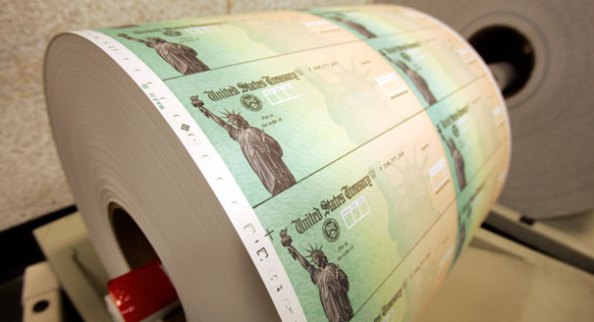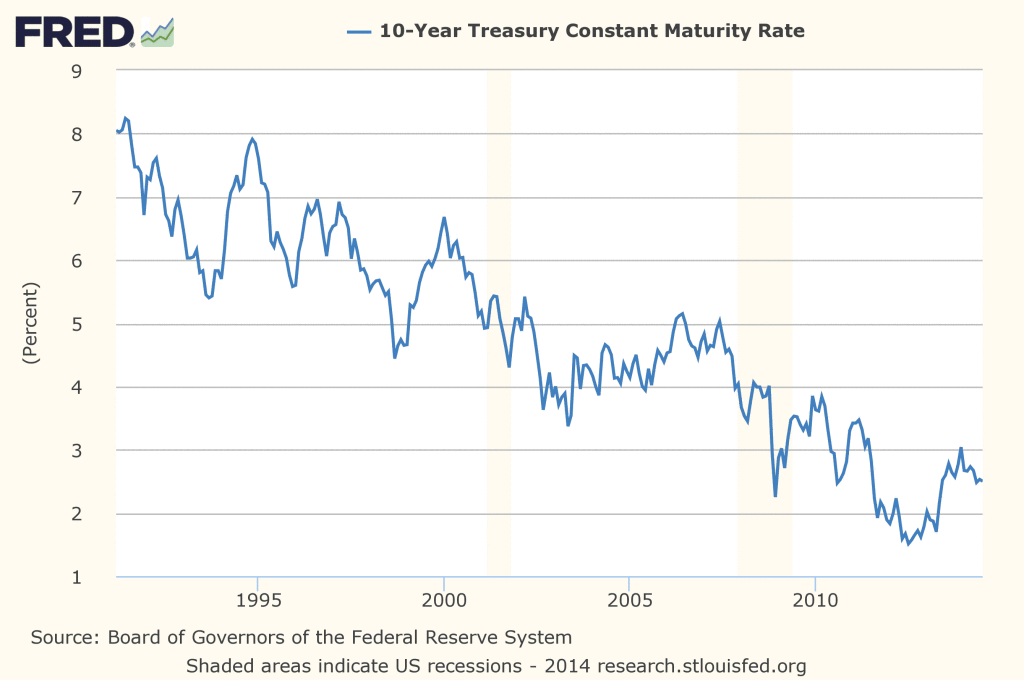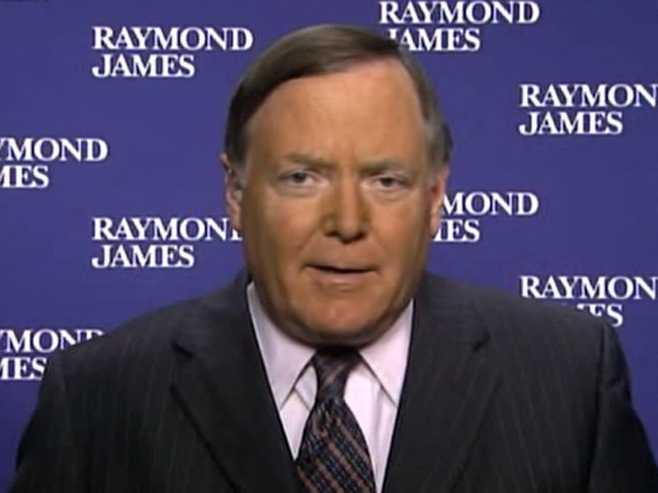by James Picerno, Capital Spectator
Some analysts are again projecting that the age of higher interest rates has finally arrived. The Fed is tapering and the US economy is expanding moderately, despite a first-quarter setback. David Kotok last week wrote that the central bank’s tapering has now passed the tipping point and reflects a “tightening” of monetary policy. Recent inflation readings have perked up as well. The consumer price index jumped 2.1 percent through May on an annual basis, the most in more than two years. But last year’s mild rise in interest rates, measured by the benchmark 10-year Treasury yield, has reversed course again and has trended lower so far in 2014. The great rise in rates has been delayed once more. What gives?
The answer, of course, is that the economic profile is still too weak to support higher rates. You can argue, as many do, that it’s all a mirage and that the Fed is artificially holding down long rates. Maybe, but that argument is weak once you consider that private holders of Treasuries include investors the world over and Fed policy doesn’t preclude those investors from selling and driving up rates.
Whatever the reason, the 10-year yield is trending lower. That could change, if and when we see economic growth accelerate. But so far the data is mixed. The economy still looks poised to grow at a moderate pace. Recent updates on nonfarm payrolls inspire expectations that the US may be turning the corner for the better. But that still constitutes wishful thinking rather than a sober-minded review of the numbers. As I noted earlier this month, the year-over-year rise in private payrolls is still rising at around 2%, which is roughly what’s it’s been all along. Yes, it’s a touch higher lately, but this is hardly a clear sign that the economy is accelerating.
Meanwhile, other indicators—industrial production and retail sales, for instance—show no bias to the upside lately. Annual growth looks modest and relatively steady, but there’s limited evidence that it’s set to break out on the upside relative to the pace we’ve seen in recent history. Meanwhile, the annual growth rate for housing starts has decelerated recently, raising questions about the outlook for this key sector.
Overall, US economic growth continues to trend positive, as confirmed in yesterday’s June update of the Chicago Fed National Activity Index. But arguing that this growth is improving in a material degree isn’t based on hard numbers at this point. Meanwhile, Europe is facing what appears to be a new round of macro headwinds and the change raises a new risk factor the US. Now-Casting.com has been revising down its Q2 estimates of Eurozone GDP lately, and lesser expectations overall are starting to resonate beyond economic consultancies, as Reuters reports:
Italian Economy Minister Pier Carlo Padoan said on Tuesday the recent German economic data show that Europe’s economy is much weaker than it was expected to be six months ago, and further economic sanctions against Russia would be a “problem” for all sides.
“The macroeconomic picture is disappointing, and recent data on Germany sounds the bell alarm because it indicates that the weakness is more persistent in time and widespread in space than what we expected six months ago,” Padoan said in testimony to the European Parliament’s economic affairs committee.
Perhaps then it’s no surprise that the appetite is increasing for safety in the form of 10-year Treasuries. The yield on the benchmark Note slipped under 2.50% yesterday for the first time since May. Meanwhile, we’re a long way from the 3.0% yield that marked last year’s close. Higher interest rates? Yes… one day. But for the moment, the trend seems to be moving in the opposite direction once more. That will change if the data, here and abroad, tells us otherwise. But for the moment, Mr. Market is inclined to fall into an old habit: bidding prices up (and yields down) on government bonds
Copyright © Capital Spectator















